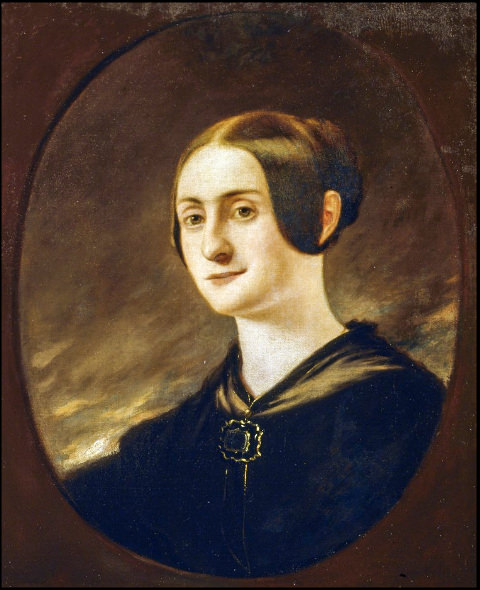Writing about her aunt Penina Moïse, who had devoted her life topoetry, liturgy and education, Jaqueline Levy recalled:
She looked with coldness on nothing that God had made; the flowerswere dear to her as spirit messengers from the Great Bestower ofbeauty. The outer world spoke to her soul, whispering of eternal loveand mercy, and the early recognition of her nearness to God and herfellow-beings gave her thought the eminent religious tone thatpervaded so much of what she wrote.
The daughter ofAbraham and Sarah Moise, Penina was bornin Charlston. Originally from Alsace, her father had worked as amerchant in the Caribbean, where he met and married her mother on theisland of Sint Eustatius. Although her father’s fortunes inbusiness were mixed, her large family—she had nine siblings—playeda prominent role in Jewish life in. Charleston. They were mebers ofcongregation Beth Elohim, and her father was a founder of the HebrewOrphan Society.
After her father’sdeath, at the age of twelve, Moïse left school, and played the roleof family nurse, caring for her mother and her brother Isaac, whosuffered from asthma. She demonstrated a passion for language, andher siblings Jacob and Rachel encouraged her poetic ambitions.
Shepublished her first poem in 1819, and thereafter her work regularlyappeared in such venues as the Charleston Courier, the BostonDaily Times, the New Orleans Commercial Times, theWashington Union, Godey’s Ladies Book, the HomeJournal of New York Occident, and the American JewishAdvocate. In 1833 she released Fancy’s Sketch Book, thefirst poetry collection by an American Jewish woman. In verse sheaddressed a range of subjects—love, death, nature, current events,Greek mythology, antisemitism, and history. Often romantic andsentimental, her work was also marked by wit and wordplay, ranging infrom lyric to light satire. She also wrote columns for newspapersthroughout the country.
Penina’screative spirit was not confined to poetry. She wasa great lover ofmusic and an amateur painter, even giving lessons to her nephewTheodore, who would become a celebratedportraitist. Her portrait, and several others in this collection,were done by him. The Moise family also remained deeply engaged withBeth Elohim. In 1841 her brother Abraham and Isaac Harby led effortsto liberalize the congregation and affiliate with Reform Judaism. Forthe new rite, new liturgy was needed, and of course they turned toPenina. In 1842 she published Hymns Written for the Use ofCongregation Beth Elohim, and she would continue to composehymns, eventually producing some hundred and ninety. In 1842she became superintendent of the Beth Elohim’s Sunday school.
During the CivilWar—in which she was a staunch defender of the Confederacy— Moïseleft Charleston for Sumter. Meanwhile, her health was deterioratingand she was losing her sight. Moïse was cared for by her widowedsister Rachel Levy and Rachel’s daughter Jaqueline. Although illand in much reduced circumstances, she returned to Charleston afterthe war, where she ran an academy with her sister and niece. Shecontinued writing poetry, undaunted by blindness and illness. A yearbefore her death she wrote:
But why should I not wish to linger here?
Do I not dwell in friendship’s atmosphere,
Where generous souls such balmy tribute bring
As makes my wintry age so like the spring
That scarce the blind recluse, amid its snows,
Detects the absence of the vernal rose?
In1911, twenty-one years after her death, the collection Secular andReligious Works of Penina Moise appeared. Thirteen of her hymnswere included in the Reform movement’s 1932 Union Hymnal. Anepitaph she composed show a slight corrective to the uncomplainingoptimism that seems otherwise to have defined her poetry andcharacter:
Layno flowers on my grave
They are for those who live in the sun
And I have always lived in the shadow.
